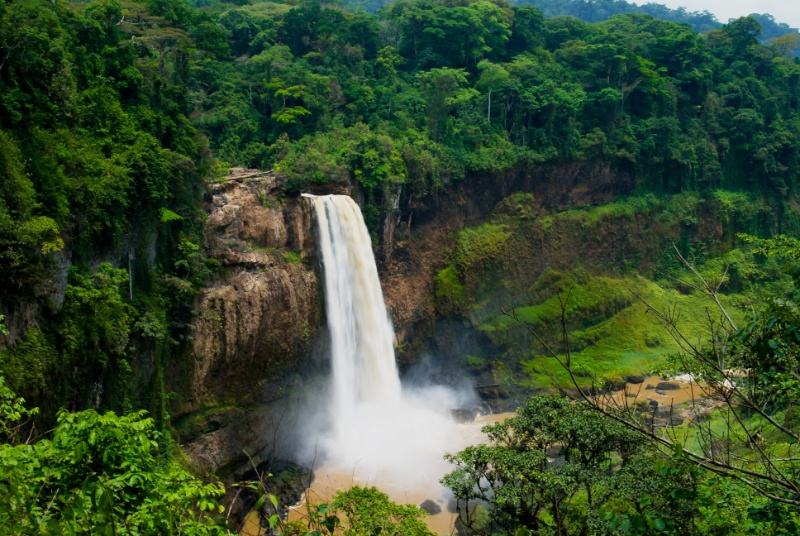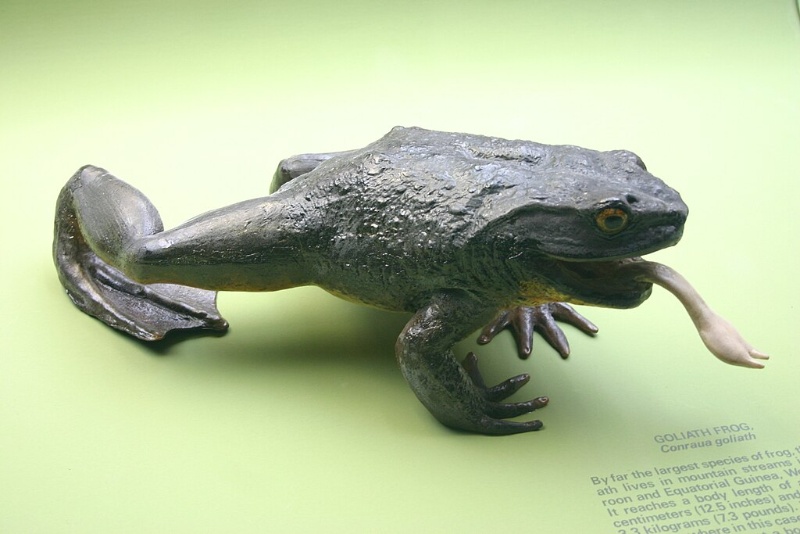Imagine a frog weighing about 7 pounds, as lengthy as a football field line marker – that’s 30 inches with legs fully stretched out! Baffling, isn’t it? This astonishing creature is known as the Goliath Frog and stands as the undisputed titleholder of the world’s biggest frog. Interestingly, the magnitude of their enormity isn’t mirrored in their eggs or tadpoles, which are relatively similar to those of their average-sized counterparts.
What causes this colossal growth remains an enigma, thereby unraveling an engaging natural mystery surrounding our star performer: the Goliath Frog. Their obscurity, coupled with their uniqueness, paves the way for our thrilling discourse.
The Native Habitat of the Biggest Frog in the World

The Goliath Frog has a rather limited geographical footprint, inhabiting select riverine habitats in Cameroon and Guinea, located in the western parts of Africa. However, these rainforest dwellers are facing severe habitat destruction due to relentless human intrusion, transforming these verdant havens into agricultural fields and settlements. Furthermore, damming of the rivers disrupts their ecological balance, creating unfavorable survival conditions.
Hunting for the Biggest Frog

Being the biggest frog isn’t all glamour and glory – there is a darker side. For over a century, private collectors and zoos worldwide have sought these massive creatures leading to their capturing and trading. The demand is fuelled by these elements:
- High rarity quotient
- Unrestricted trading due to their unprotected status
- Lucrative profits, with each frog fetching up to $3000
Despite being challenging to locate and catch, a substantial export rate persists, specifically from Cameroon, clocking in around 300 Goliath frogs annually.
Goliath Frog’s Plight in Captivity
Interestingly, the formerly high US demand for these frogs has gradually fizzled out, possibly due to increased environmental awareness. Now, only a handful of US zoos house the Goliath Frog.
However, two serious issues loom overhead: the Goliath Frog’s poor adaptability to captivity and their inability to breed successfully once captured. Preserving the natural habitats of these fascinating creatures might just be the key to securing this species’ survival.
See Related: The Fascinating Journey of Bullfrog Tadpoles: From Tiny Eggs to Mighty Amphibians
Hope for the Biggest Frog
A strategic approach could offer some hope. Local governments could regulate and manage their population by recording their numbers, allowing only permit-based hunting. This way, the balance can perhaps be restored, helping these magnificent creatures to thrive again and continue to pique our curiosity with their unmatched size.
The Bigger Problem
However, the declining numbers of amphibians worldwide are alarming, mirroring the plight of the Goliath Frog. As we explore ways to conserve this extraordinary species, we must also consider broader environmental interventions to protect our delicate ecosystems for the overall preservation of amphibian biodiversity.
Related Resources
For more intriguing reads on frogs and fascinating reptile species, feel free to browse through these articles: